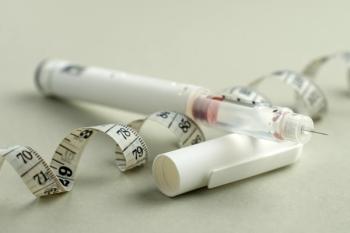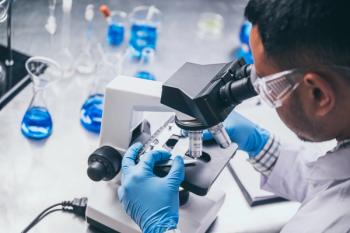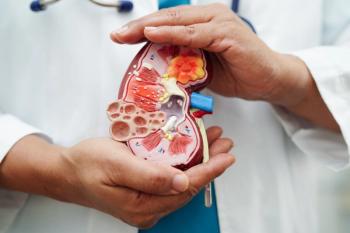
GADD45A May Prevent Inflammation, Fibrosis, and Preserve Cardiac Function
Key Takeaways
- GADD45A plays a crucial role in preventing inflammation, fibrosis, and apoptosis, preserving cardiac function.
- Deficiency in GADD45A leads to increased cardiac fibrosis, inflammation, and apoptosis in mouse models.
The authors are optimistic that GADD45A serves as a foundation for therapeutic approaches to slow the progression of heart failure.
Findings from a recent study published in Cellular and Molecular Life Sciences show that the growth arrest and DNA damage inducible 45A (GADD45A) has an important role within the heart. It may prevent inflammation, fibrosis, and apoptosis, indicating a potential to preserve cardiac function and performance. In cardio hypertrophy and heart failure, fibrosis and inflammation are crucial in disease progression, and therefore, GADD45A’s activity can be the foundation for new, promising therapeutic strategies to slow progression.1
When the heart’s workload increases, the ventricular wall may thicken, resulting in what is known as cardiac hypertrophy. This is an adaptive response in which pressure on the heart is reduced and the activity of the organ is maintained. It is often a reversible process that does not cause serious effects on the structure or function of a patient’s heart; however, if the factor that causes cardiac overload were to become chronic, it can result in pathological hypertrophy with more serious effects (eg, dilatation of the ventricular cavities, alterations in cardiac function, heart failure).1
“Fibrosis, in particular, correlates directly with the development of the disease and with adverse clinical outcomes, and has a major impact on the clinical condition of the patient,” study author Manuel Vázquez-Carrera, professor, faculty of pharmacy and food sciences, University of Barcelona, Institute of Biomedicine (IBUB), Sant Joan de Déu Research Institute (IRSJD), and the Biomedical Research Networking Center in Diabetes and Associated Metabolic Disorders (CIBERDEM).2
In their study, the authors aimed to evaluate the role of GADD45A in the heart by using mice with constitutive and systemic deletion of GADD45A and cardiac cells of human origin. Human samples consisted of left ventricular myocardial intraoperative biopsies that were obtained from 59 patients (31 women) who were diagnosed with isolated severe aortic stenosis and underwent aortic valve replacement surgery in the University Hospital Marqués de Valdecilla in Santander. A control group included 30 surgical patients (17 women) with pathologies that were not associated with left ventricle pressure or volume overload, coronary heart disease, or cardiomyopathies. For the mouse subjects, male mice with constitutive and systemic deletion of GADD45A and their control wild-type littermates with the same genetic background were used.1,2
The study findings showed that GADD45A protein was observed to be a multifunctional factor that was associated with stress signaling and cell damage in both mouse models and human cardiac cells. Its main mechanisms were within pathological hypertrophy, including the inflammatory processes, fibrosis, mitochondrial dysfunction, dysregulation of calcium-handling proteins, metabolic alterations, cardiomyocyte hypertrophy, and cell death.1
Further, the results revealed that the lack of the GADD45A factor in mice triggered cardiac fibrosis, inflammation, and apoptosis. These changes correlate with the hyperactivation of the proinflammatory and profibrotic transcription factors activator protein-1, nuclear factor-κB, and signal transducer and activator of transcription 3.
Additionally, it was observed that the deletion of GADD45A also caused substantial cardiac hypertrophy, which negatively affected cardiac morphology and function in mice that lacked this protein. Overexpression of GADD45A in human AC16 cardiomyocytes had partially prevented the inflammatory and fibrotic response induced by tumor necrosis factor-α.1
“Taken together, the data presented in this study highlight an important role for GADD45A protein in the heart, as it may prevent inflammation, fibrosis, and apoptosis and thus preserve cardiac function," study author Xavier Palomer, PhD, associate professor, University of Barcelona, IBUB, IRSJD, and CIBERDEM, said.2
The authors noted that these findings expand on prior knowledge of GADD45A’s mechanisms of action within the body. Prior research shows its role as a tumor suppressor in cancer development and its involvement in the regulation of both catabolic and anabolic metabolic pathways in inflammation prevention, fibrosis, and oxidative stress within certain tissues and organs.1,2
REFERENCES
1. Rostami A, Palomer X, Pizarro-Delgado J, et al. GADD45A suppression contributes to cardiac remodeling by promoting inflammation, fibrosis and hypertrophy. Cell. Mol. Life Sci. 82, 189 (2025). doi:10.1007/s00018-025-05704-x
2. University of Barcelona. New factor linked to heart failure. News release. May 22, 2025. Accessed May 23, 2025. https://www.eurekalert.org/news-releases/1084914
Newsletter
Stay informed on drug updates, treatment guidelines, and pharmacy practice trends—subscribe to Pharmacy Times for weekly clinical insights.



















































































































































































































